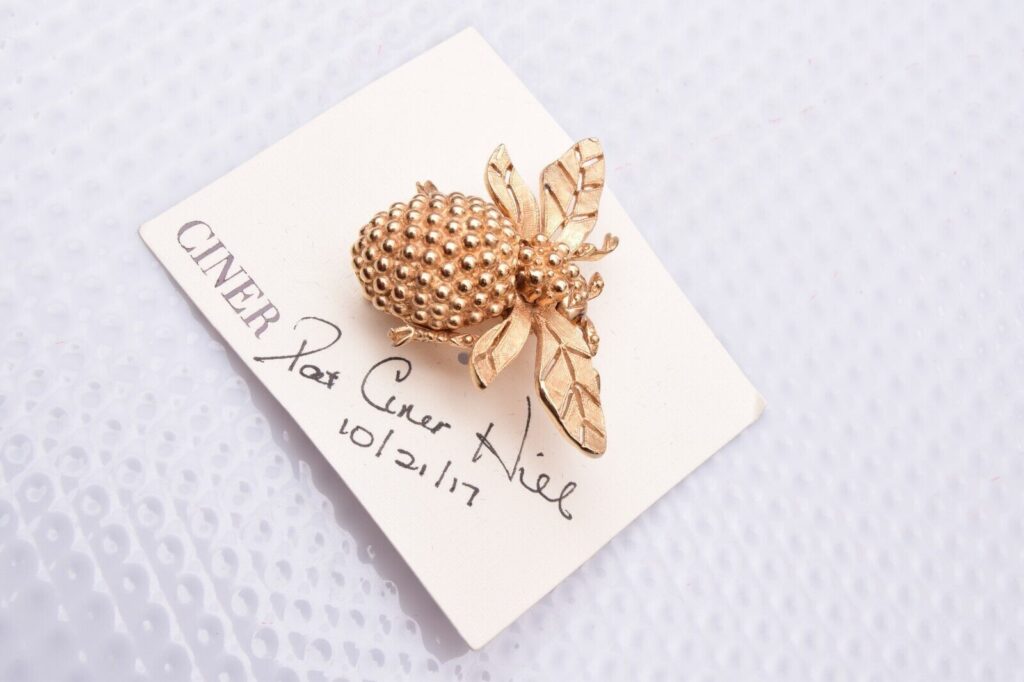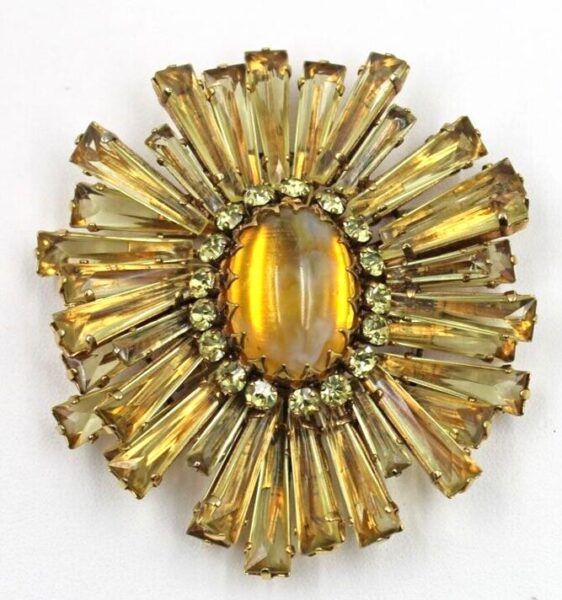#Vintage #Costume #Jewelrys #Influential #Women #WorthPoint
Since March is Women’s History Month, I thought it would be a great time to highlight some of the many women who have made a significant impact on the costume jewelry industry. You’ve probably heard plenty about Joan Castle Joseff, Miriam Haskell, Hattie Carnegie, Elsa Schiaparelli, and Coco Chanel, but there are many other women who have also contributed to the success of businesses associated with brands familiar to costume jewelry collectors.
It’s often the male founders or lead designers of costume jewelry businesses that get most of the credit for the impressive jewelry produced by these firms. In many instances, though, women worked alongside their husbands, and several took over companies to keep them alive. Other industrious ladies stepped into leadership roles in family businesses and took them to new heights. What they all have in common is putting in countless hours to make a firm successful and producing some truly memorable jewelry in the process. Among these women are Susanne Gripoix, Terry Schreiner, Sandra Boucher, and Pat Ciner Hill.
Susanne Gripoix
I’m starting with Susanne Gripoix for a very specific reason: her family name is often misused in the costume jewelry-selling arena. Several years ago, someone decided to start calling every colorful molded glass cabochon used in very average costume jewelry “Gripoix.” More and more sellers have started using the moniker to attract attention to jewelry that, quite frankly, is not worthy. It’s not just a disservice to the Gripoix name, it’s not an accurate description. The glass components made by Gripoix are intricately handmade, and the majority of those being called Gripoix today are machine molded.
Madame Susanne Gripoix operated the House of Gripoix—founded in France by Augustina Gripoix in the mid-1800s—during an important period in the evolution of costume jewelry. During the 1920s, she worked with Chanel to design very intricate and beautiful adornments using pâte de verre glass coveted by today’s avid collectors. Other noteworthy clients during that era included Paul Poiret and Charles Frederick Worth. She also included her daughter Josette in the family business and trained her as a glass artisan.
Since then, glass components made by the House of Gripoix have graced some of the most important pieces of costume jewelry ever made. Associated couture houses include Dior, Balenciaga, and Lanvin, along with a host of others, including an ongoing relationship with Chanel.
The business is still producing glass components, and they’ve marketed jewelry under their own brand for several decades as well. It’s safe to say without Suzanne Gripoix’s efforts a century ago, that wouldn’t be possible.
Terry Schreiner Albert
Terry Schreiner Albert was an integral part of Schreiner’s history. Her father, Henry Schreiner, founded the company in the early 1930s, but she and her husband, Ambros Albert, took the reins when he died in 1954. This was a crucial turning point since it was either take the reins or close the company’s doors.
Their decision to move forward allowed Ambros—an engineer who had been working for Schreiner part-time on nights and weekends—to come into his own as a designer. He, in fact, headed design and production for the company while Terry took care of the day-to-day business, which included running the showroom. Most of the amazingly colorful designs collectors covet were made while the couple headed the firm.
Beyond marketing some truly incredible costume jewelry designs, Terry Albert was instrumental in sharing the history of Schreiner with Carole Tanenbaum and Eve Townsend for their book Schreiner: Masters of Twentieth-Century Costume Jewelry. Albert’s input enabled them to provide a more complete picture of this famed brand. With deep appreciation, Tanenbaum and Townsend announced on Facebook that Terry Albert passed away in May 2020 at ninety-two years old.
Sandra Boucher
Frenchwoman Sandra Boucher (née Semensohn) was another individual who stepped in to keep a popular jewelry business going after the death of the founder. In 1949, she went to work as an assistant to Marcel Boucher, who started his namesake business in 1937. Recognizing her talent as a designer, he quickly made her an esteemed part of his team. The couple bonded personally, too, and in the early 1950s, she became his second wife.
Sandra left Boucher to work as chief designer for Tiffany & Co. from 1958 through 1961. She then returned to the creative freedom she found designing for Marcel Boucher et Cie. The couple continued working together until 1965, when Marcel Boucher passed away. Sandra Boucher ran the business through 1970, when she sold it to Davorn Industries. She remained with the company thereafter, however, as president and lead designer until 1978.
While still working as an independent designer, one of Sandra Boucher’s greatest gifts to collectors in the early 2000s was relaying specifics about Marcel Boucher et Cie to jewelry historians. The details about a major contributor to the costume jewelry industry would have otherwise been lost to time.

Pat Ciner Hill
Pat Ciner Hill was also dedicated to keeping a family business alive. Emanuel Ciner, her grandfather, formed Ciner New York in 1892. She learned the ins and outs of the company working with her father and uncle. She then took over the firm in the late 1970s with the assistance of her husband David Hill.
Throughout the ’80s and early ’90s, the Hills saw great success with Ciner. Their amazing animal figurals were best sellers and are now favorites among jewelry enthusiasts. Their earring lines during this timeframe were also quite popular with women seeking the “dress for success” look, and they’re still quite wearable decades later.
The couple continued working together until 2008, when David Hill died. Their daughter, Jean Hill, who went to work for the family business in 1984, helped her mother carry the company into the 2010s. Pat Ciner Hill passed away in February 2023, and the business was closed later that year. Nevertheless, the Ciner legacy lives on through the jewelry made by this firm for more than 130 years.
These are several of the many influential women deserving of recognition for their work in the costume jewelry industry. Without their efforts, some truly amazing jewelry wouldn’t exist to delight collectors today.
Pamela Siegel is a freelance writer and author who has been educating collectors for more than two decades. In addition to three books on topics relating to antiques and collectibles, she frequently shares her expertise through online writing and articles for print-based publications. Pamela is also the co-founder of Costume Jewelry Collectors Int’l (CJCI) and the proprietor of Chic Antiques by Pamela.
WorthPoint—Discover. Value. Preserve.




